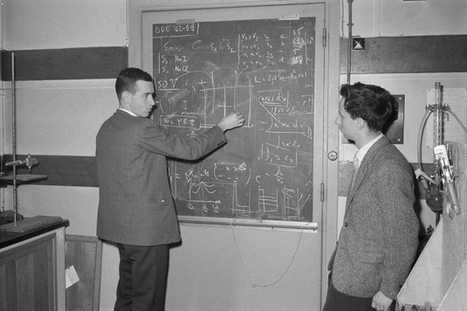There are many ways to rank universities, but one that’s rarely considered is how many of their graduates make extraordinary contributions to society. A new analysis does just that, ranking institutions by the proportion of their undergraduates that go on to win a Nobel prize.
Two schools dominate the rankings: École Normale Supérieure (ENS) in Paris and the California Institute of Technology (Caltech) in Pasadena. These small, elite institutions each admit fewer than 250 undergraduate students per year, yet their per capita production of Nobelists outstrips some larger world-class universities by factors of hundreds.
“This is a way to identify colleges that have a history of producing major impact,” says Jonathan Wai, a psychologist at Duke University in Durham, North Carolina, and a co-author of the unpublished study. “It gives us a new way of thinking about and evaluating what makes an undergraduate institution great.”
Wai and Stephen Hsu, a physicist at Michigan State University in East Lansing, examined the 81 institutions worldwide with at least three alumni who have received Nobel prizes in chemistry, physiology or medicine, physics and economics between 1901 and 2015. To meaningfully compare schools, which have widely varying alumni populations, the team divided the number of Nobel laureates at a school by its estimated number of undergraduate alumni.
Small but mightyMany of the top Nobel-producing schools are private, and have significant financial resources. Among the more surprising high performers were several very small US liberal-arts colleges, such as Swarthmore College in Pennsylvania (ranked at number 4) and Amherst College in Massachusetts (number 9).
Source: Jonathan Wai & Stephen Hsu
“What these smaller schools are doing might serve as important undergraduate models to follow in terms of selection and training,” says Wai, who adds that, although admission to one of the colleges on the list is no guarantee of important achievements later in life, the probability is much higher for these select matriculates.
To gauge trends over time, Wai cut the sample of 870 laureates into 20-year bands. US universities, which now make up almost half of the top 50 list, began to dominate after the Second World War. Whereas French representation in the Nobel ranks has declined over time, top-ranked ENS has remained steady in its output.
Hsu and Wai had previously performed two similar, but broader, analyses of the rate at which US universities produce winners of the Nobel prize, Fields Medal (in mathematics) or Turing Award (in computer science), as well as members of the US National Academies of Sciences, Engineering, and Medicine. These studies produced rankings of US institutions that are similar to the new, global Nobel rankings.



 Your new post is loading...
Your new post is loading...








Surprised not to see "ESPCI" in the list. This ranking echoes the Fields Medal / capita ratio that also puts France totally ahead and off charts. Question is, how will we stand in 20 years from now given current policies and their impact on children demographics and education ?